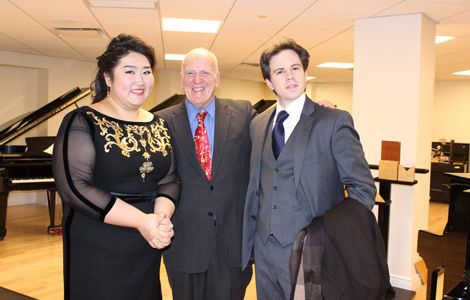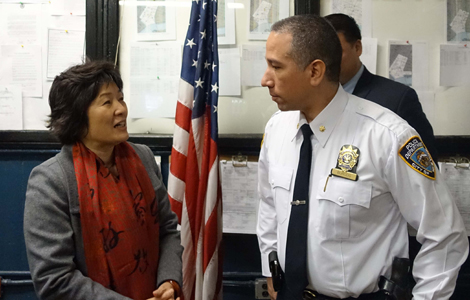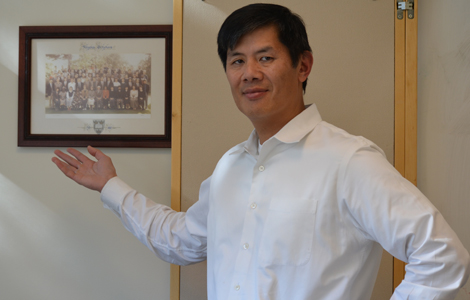Bullying is not cool and doesn't belong in US schools
Updated: 2014-12-24 04:27
By Chang Jun(China Daily USA)
|
||||||||
Families and school administrators need to keep vigilant to any form of bullying in schools – intentionally aggressive, usually repeated, verbal, social or physical behavior aimed at a specific person or group of people – and act quickly to stop the malicious and shield the young and vulnerable from falling victims to bullying.
In the United States, bullying has become a profound problem in schools nationwide.
According to the latest statistics from the US Department of Health and Human Services (DHHS), the majority of bullying still takes place at schools, with about one in three US students saying they had been bullied there.
Some bullying is considered criminal, such as harassment or hazing. However, bullying alone is not considered illegal. In recent years, as more and more targets are harassed through social media or other technology, cyberbullying has intensified, and made it difficult for school administrators and families to intervene.
The National Crime Victimization Survey, which was conducted in 2012 to represent the entire enrolled 9th-12th grade student population in the US, indicated that about 2.2 million students experienced cyberbullying in 2011. In the survey, of the 9 percent of students who reported being cyber-bullied 71.9 percent said it had occurred once or twice in the school year.
In the last decade, Americans have been saddened by losses of young lives due to school bullying. For example, Megan Taylor Meier, of St. Louis, Missouri, hung herself three weeks before her 14th birthday in 2006 after being bullied through the social networking website MySpace. In October 2013, Rebecca Sedwick of Lakeland, Florida, committed suicide in Miami after being repeatedly bullied in person and online.
And in Ohio, the suicide of a 13-year-old girl on Dec 13 made national headlines when her parents and fellow students blamed it on bullying. But the local law enforcement authorities recently ruled out bullying as the cause.
Why is school bullying so rampant? According to a psychology study at the University of California, Los Angeles, (UCLA), bullying boosts the social status and popularity of students who do it, especially teenagers at middle schools. Researchers surveyed 1,895 students at 11 Los Angeles middle schools, where students were asked to name those they considered the “coolest”. According to Jaana Juvonen, the lead author of the study, “the ones who are ‘cool’ bully more, and the ones who bully more are seen as ‘cool’”.
According to one study cited by the DHHS, 29.3percent of middle-school students had experienced bullying in the classroom; 29 percent experienced it in hallways or locker rooms; 23.4 percent were bullied in the cafeteria; 19.5 percent were bullied during gym class; and 12.2 percent of bullied kids couldn’t even escape the torture in the bathroom.
Perhaps bullying affects students' sense of security more than any other school safety problem. The most effective ways to prevent or lessen bullying requires school administrators' commitment and intensive effort; parents also need to use their influence to encourage schools to address the problem as well as keep educating their children to stand up for themselves when being bullied.
Fortunately, educators are making great efforts to teach children at a young age the harm of school-place bullying and applying zero tolerance when it happens.
For example, the school my first-grader son attends in the Bay Area has launched a campaign on anti-bullying throughout this month, requiring all staff, students and parents to attend orientations and briefings to create a bully-free environment for the children.
Contact the writer at junechang@chinadailyusa.com
Bullying is not cool and doesn't belong in US schools

 Music at her fingers
Music at her fingers
 Across America Over the Week (Jan 16 - Jan 22)
Across America Over the Week (Jan 16 - Jan 22)
 Spend Chinese New Year in style
Spend Chinese New Year in style
 Ili river valley becomes a popular destination for swans
Ili river valley becomes a popular destination for swans
 Philip Ma: from scientist to businessman
Philip Ma: from scientist to businessman
 Birmingham's Spotlight on China dinner
Birmingham's Spotlight on China dinner
 How to distinguish doucai, wucai, Famille-rose and enamel porcelain
How to distinguish doucai, wucai, Famille-rose and enamel porcelain
 Xinjiang lake in bumper fishing season
Xinjiang lake in bumper fishing season
Most Viewed
Editor's Picks

|

|

|

|

|

|
Today's Top News
Houston's SW Chinatown
China to focus on reforms, opening of capital market
Slowdown brings new risks to banks
Trade group calls for BIT
Market status for China is 'political' issue
Birmingham's Spotlight on China dinner
Bank takes renminbi-clearing seriously
Traditional Garb
US Weekly

|

|








